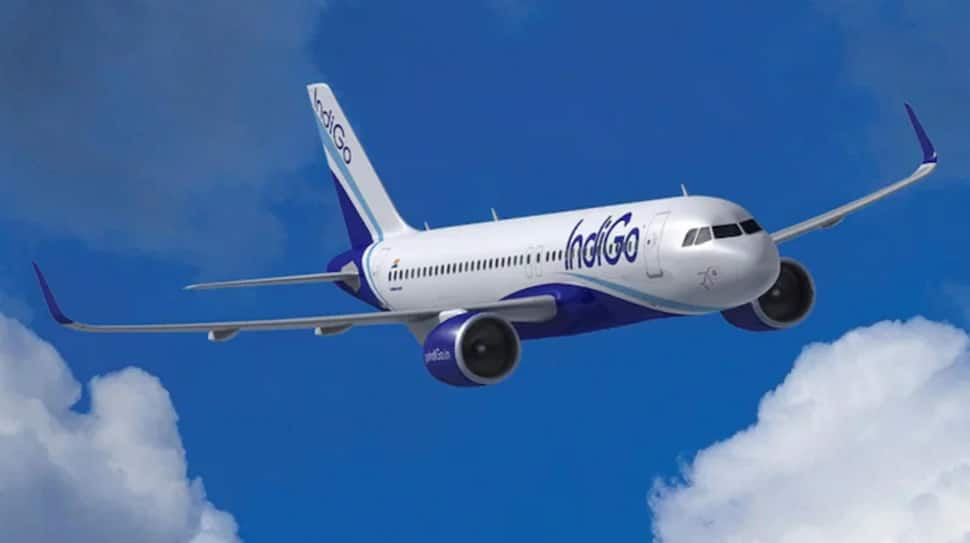Business
Debt mutual funds: Rs 1.02 lakh crore outflows in September; liquid & money market funds hit hardest – The Times of India

Fixed-income mutual funds in India witnessed a massive net outflow of Rs 1.02 lakh crore in September 2025, a sharp rise from modest redemptions of Rs 7,980 crore in August, according to data from the Association of Mutual Funds in India (Amfi). The surge was primarily driven by large institutional withdrawals from liquid and money market funds.Out of 16 debt categories, 12 recorded net outflows during the month. Liquid funds saw the steepest outflow at Rs 66,042 crore, followed by money market funds with Rs 17,900 crore, and ultra-short duration funds with Rs 13,606 crore. Low-duration funds also recorded redemptions of Rs 1,253 crore. Short-duration funds faced a relatively modest outflow of Rs 2,173 crore, suggesting that some investors remained anchored to shorter-tenor accrual-oriented products.As per news agency PTI, senior analyst Nehal Meshram from Morningstar Investment Research India explained, “The higher outflow in September was primarily led by large institutional withdrawals from liquid and money market funds, reflecting quarter-end liquidity adjustments and advance tax-related outflows. These categories often used by corporates and institutions for short-term cash management remain highly sensitive to seasonal liquidity cycles.”The large redemptions pulled down the assets under management (AUM) of debt funds by nearly 5 per cent to Rs 17.8 lakh crore at the end of September from Rs 18.71 lakh crore in the preceding month.On the inflow side, overnight funds registered Rs 4,279 crore, dynamic bond funds Rs 519 crore, medium to long-duration funds Rs 103 crore, and long-duration funds Rs 61 crore.Equity mutual funds, in contrast, saw inflows of Rs 30,421 crore in September, a 9 per cent decline from Rs 33,430 crore in August and well below July’s record-high inflow of Rs 42,703 crore, as investors remained cautious amid market volatility and global uncertainties.
Business
Volkswagen capex recalibration: Automaker pares 2030 investment to $186 bn; China, US headwinds grow – The Times of India

Volkswagen Group plans to invest €160 billion ($186 billion) through 2030, a scaled-down outlay that reflects tightening capital allocation as Europe’s largest automaker grapples with mounting pressure in its two biggest markets — China and the United States, Reuters reported.The investment figure, announced by Volkswagen CEO Oliver Blume, is part of the company’s rolling five-year capital expenditure plan, which is updated annually. The latest commitment compares with €165 billion earmarked for 2025–2029 and €180 billion for 2024–2028, with 2024 marking the peak year for spending.Since that peak, the group — which houses brands such as Porsche and Audi — has been squeezed by higher costs and weaker margins, hit by US tariffs on imported vehicles and intensifying competition in China. The strain has been felt most acutely at Porsche, which derives nearly half of its sales from the US and China combined.Porsche recently unveiled a significant rollback of its electric vehicle strategy as profits came under pressure. Speaking to Frankfurter Allgemeine Sonntagszeitung, Blume said the focus of the latest investment plan was firmly “on Germany and Europe,” particularly in products, technology and infrastructure.Blume added that discussions on an extended savings programme at Porsche are expected to continue into 2026. He also said he does not expect Porsche to grow in China, though localising production across the wider Volkswagen group remains an option. A China-specific Porsche model could make sense at some point, he said.On Audi, Blume noted that any decision on building a manufacturing plant in the United States would depend on whether Washington offers substantial financial support.Blume, who will step down as Porsche CEO in January to concentrate fully on running Volkswagen Group, said his recent contract extension as Volkswagen chief executive until 2030 signalled continued backing from the Porsche and Piëch families as well as the German state of Lower Saxony, the company’s largest shareholders.“But it is true, of course, that shareholders have suffered losses since Porsche went public three years ago. I, too, must face up to this criticism,” he said.
Business
How IndiGo Managed To Hold A Country Of 1.4 Billion People Hostage, Forced Govt To Bend Rules | Analysis

At a time when most Indian airlines are posting losses, IndiGo stands out as the only profitable carrier. Yet, while loss-making airlines managed to comply with DGCA directives within the allotted 18-month period, the one airline turning a profit failed to do so. The DGCA had provided ample time for compliance and workforce planning. But while others focused on meeting regulatory requirements, IndiGo appeared to pursue a different strategy—creating disruption to pressure the government. Incredibly, this approach worked: instead of imposing penalties, the government chose to relax the norms.
Aviation expert Harsh Vardhan squarely called this entire crisis a failure of IndiGo’s management. He said this is an extremely unprecedented situation. Passengers have been suffering for three days, and this is the peak tourist, wedding, and business season. IndiGo’s claim that the new FDTL policy suddenly created problems is nothing but a management failure. The policy wasn’t introduced overnight—it was formulated over years of deliberation and was finalised a year ago.
Harsh Vardhan reminded that the soft launch of the FDTL took place on July 1, 2025, and it was fully implemented from November 1, 2025. Other operators like Air India and SpiceJet made timely adjustments, which is why no major crisis emerged there. What surprises him most is the timing—if the policy was effective from November 1, why did this sudden “rampage” begin only a month later, at the start of December?
“The Government of India has decided to institute a high-level inquiry into this disruption. The inquiry will examine what went wrong at Indigo, determine accountability wherever required for appropriate actions, and recommend measures to prevent similar disruptions in the future, ensuring that passengers do not face such hardships again,” said the Ministry of Civil Aviation in a statement.
No one knows what will come out of the inquiry but, interestingly, IndiGo got rewarded for its blackmailing, instead of getting punished as the government relaxed norms.
Due to the IndiGo induced turbulence, the airfare on key routes touched Rs 80,000 to Rs 90,000. IndiGo didn’t merely cancel flights—it brought the system to a standstill, grounding aircraft, showcasing its clout, and effectively challenging the government to respond. Instead of asserting its authority, the NDA government backed down and rolled back its own directive. Through deliberate mismanagement, the airline pushed the system toward chaos. The suspension of over a thousand IndiGo flights severely disrupted the economy, sending hotel prices and ticket fares on other airlines soaring.
“The central government has ordered a probe and refunds—but the question is: when the monopoly of private companies and the government’s silence come together, who will protect the common people? Who are you working for? The public or the interests of big corporate houses?” Former Delhi Dy CM Manish Sisodia rightly questioned the government.
Shockingly, a country of 1.4 billion people relies primarily on just two major domestic carriers—IndiGo and Air India. IndiGo’s dominance is so significant that even Leader of the Opposition Rahul Gandhi publicly criticised the government for its oversight failures. “IndiGo fiasco is the cost of this Govt’s monopoly model. Once again, it’s ordinary Indians who pay the price – in delays, cancellations and helplessness. India deserves fair competition in every sector, not match-fixing monopolies,” said Gandhi.
For two decades, successive governments have allowed major airlines to collapse instead of restructuring them under new ownership. Jet Airways and Kingfisher Airlines are prime examples: both could have been revived by removing problematic promoters, yet no institutional mechanism was activated. The pattern repeated itself with Go First. When three airlines vanish in a decade, it signals not merely corporate failures but a systemic unwillingness to safeguard competition and consumer interest, wrote Prashant Tewari, public policy expert, mentioned in a recent report in The Pioneer.
Today, IndiGo controls over half of India’s domestic aviation market, with the Air India group holding most of the remainder. Smaller airlines operate on the margins, too weak to influence pricing or service standards.
Tewari wrote that disappearance of three airlines within years show government’s failure of protecting competition and consumer interest.
This duopoly-like environment has suffocated passengers: airfares on busy domestic routes routinely exceed those for comparable distances in Europe, Southeast Asia, or even the United States. A two-hour flight within India can cost more than a four-hour international journey elsewhere.
“IndiGo airline fiasco shows that Modi govt is either incompetent or in collusion. In either case, India deserves better. People have never suffered so much,” said Former Delhi CM and AAP convener Arvind Kejriwal.
For years, India’s aviation sector has needed at least eight to ten robust operators to foster true competition, stabilise fares, and minimise disruptions. Instead, new entrants face steep barriers, licensing moves painfully slowly, and foreign carriers seeking expansion are hindered by outdated protectionist policies disguised as national security concerns. This refusal to liberalise the skies has turned India into one of the world’s most expensive domestic aviation markets.
According to Tewari, the duoploy ecosystem suits certain entrenched interests. With opaque decision-making, India’s aviation sector functions with minimal accountability, he opined.
Though the government’s UDAN scheme was launched to make air travel accessible to the common citizen, soaring fares have made flying increasingly unaffordable.
Besides opening new airports, the government must urgently liberalise the sector, encourage new domestic players, revive grounded airlines under competent management, and allow credible foreign carriers to compete under regulated conditions. Until then, Indian travellers will continue to pay excessively, learning the same harsh lessons again and again.
Business
From the California gold rush to Sydney Sweeney: How denim became the most enduring garment in American fashion

Jodie Foster, Billie Perkins, and Robert De Niro perform a scene in Taxi Driver directed by Martin Scorsese in 1976 in New York, New York.
Michael Ochs Archives | Moviepix | Getty Images
In the dwindling days of the California gold rush, the wife of a local miner faced a problem.
Her husband’s denim work pants kept ripping, so her tailor, Jacob Davis, had the idea to add copper rivets to key points of strain, like the pocket corners and the base of the button fly, to keep them from tearing.
Davis’ “riveted pants” soon became a roaring success and, unbeknownst to him at the time, marked the official birth of the blue jean, a garment that would transform fashion and come to represent the United States around the globe.
“It really has democratized American fashion and it also is the greatest export that we have sent to the world, because people identify jeans specifically with American Western culture,” said Shawn Grain Carter, a fashion professor at the Fashion Institute of Technology in New York. “It doesn’t matter your economic or social class. It doesn’t matter what your views are in terms of the political spectrum. Everybody wears denim.”
Jacob Davis
Courtesy: Levi Strauss & Co.
These days, denim is a major sales driver for retailers big and small, as the global denim market reached $101 billion this year, up 28% from 2020, according to data from market research company Euromonitor International. Major apparel companies from American Eagle to Levi Strauss are in a race to corner that market, leaning on A-list celebrities like Sydney Sweeney and Beyonce to win over shoppers and drive sales in an unsteady economy.
But if it weren’t for Levi Strauss, founder of the eponymous blue jeans company, Davis’ invention may not have gone far beyond the railroad town where it was created in the early 1870s.
How Levi’s created blue jeans
Soon after Davis created his riveted pants, called “waist overalls” or “overalls” at the time, they began selling like “hot cakes” and he needed a business partner to secure a patent, said Tracey Panek, Levi’s in-house historian. So he wrote to Strauss, a Bavarian-born immigrant who was running a successful wholesale business in San Francisco and had supplied Davis the denim he used to create his riveted pants.
“The secret of them Pents is the Rivits that I put in those Pockets and I found the demand so large that I cannot make them up fast enough,” Davis wrote Strauss in a letter, according to PBS.
Levi Strauss
Courtesy: Levi Strauss & Co.
Strauss, an “astute” businessman, recognized the opportunity and agreed to partner with Davis, said Panek.
“This would have been the first time that Levi was actually” manufacturing his own products, said Panek. “He was no longer just importing and selling other people’s goods. He was manufacturing himself and selling to retailers.”
On May 20, 1873, the two men secured a patent for the riveted pants and eventually opened a factory on Fremont Street, close to the modern-day Salesforce tower in San Francisco’s financial district.
They promised to offer workers the most durable jeans on the market and soon, business was booming.
Dude ranch duds and the American worker
Through Strauss’ connections as a wholesaler, the company’s riveted overalls soon spread across the U.S., becoming the garment of choice for working men everywhere: miners, cowboys, farmers – any role that required durable clothing.
Jeans were exclusively reserved for work settings at the time, but as emerging denim manufacturers vied for a similar customer base, they looked to expand their assortment to drive sales.
“Slowly and steadily into the 20th century, you start to see some of these manufacturers making variations,” said Sonya Abrego, a New York City-based fashion historian. “There was this one design called spring bottom pants that was kind of a more form fitted, a more dressed up, a slightly flared, maybe what the factory foreman would be wearing, right? As opposed to just the guy on the shop floor.”
In 1934, Levi created the first ever line of jeans for women. Around that time, denim started to become more popular in settings outside of work, primarily for activities like dude ranch vacations, camping and horseback riding.
“So they were kind of taking on a cowboy’s garment or a worker’s garment but wearing it in a … resort setting,” said Abrego.
Courtesy: Levi Strauss & Co.
Dude ranch vacations had become popular because there were finally highways connecting different parts of the country, and few were willing to venture to Europe during a war. Companies like Levi began releasing advertisements highlighting their denim as “dude ranch duds” and “authentic western riding wear” to capture shoppers looking for jeans to bring with them on vacation, according to archival advertisements from the time.
These cultural moments helped to expand denim beyond workers, but jeans didn’t become widespread casual attire until after World War II, when American fashion overall started to shift.
The rise of the backyard BBQ
By the time World War II ended, the mighty American consumer was beginning to emerge. For years, Americans had been forced to ration common goods like rubber, sugar and meat while simultaneously being encouraged to save their money by buying war bonds and socking away spare cash.
When the country shifted from wartime to peacetime, Americans were ready to splurge and soon began spending big on new cars, appliances and clothes.
“With a little bit more money to spend, you start seeing a bigger push for leisure clothes and fun clothes and play clothes, clothes to wear to backyard barbecues,” said Abrego. “Clothes that we would consider today as just like casual style.”
Courtesy: Levi Strauss & Co.
Slowly and surely, it became more and more acceptable for both men and women to wear jeans outside of work settings. Then, denim manufacturers made a push to allow jeans in schools.
“They wanted to sell to as many people as they possibly could,” said Abrego. “The idea that jeans are good for school means that they’re good for every day.”
By the time the 1960s hit, denim manufacturers had expanded their products and were selling a wide variety of colors, fits and styles. It became a symbol of the hippie movement and a mainstay on Hollywood sets.
Soon, denim was everywhere, and the 1970s brought the iconic bell bottom pants and the first iteration of the “designer jean” — denim pants being produced by labels and brands whose designs had nothing to do with work wear or western wear, like Calvin Klein and Gloria Vanderbilt.
Since then, denim has remained a constant in global fashion. While silhouettes, washes and fits have changed over time, jeans never really go out of style, which is what makes them so enduring, said Abrego.
“This is a design from 1873 … do we see anything else from 1873 on the street? It’s kind of wild if you think about it that way,” said Abrego. “We can talk about all the details, all the changes in manufacturing and all the different fits and finishes but it’s a recognizable thing, it’s still a pair of jeans. For me as a historian, that continuity is so compelling because I can’t really name anything else that has stayed the same to this degree.”
-

 Tech6 days ago
Tech6 days agoGet Your Steps In From Your Home Office With This Walking Pad—On Sale This Week
-

 Sports6 days ago
Sports6 days agoIndia Triumphs Over South Africa in First ODI Thanks to Kohli’s Heroics – SUCH TV
-

 Entertainment6 days ago
Entertainment6 days agoSadie Sink talks about the future of Max in ‘Stranger Things’
-

 Fashion6 days ago
Fashion6 days agoResults are in: US Black Friday store visits down, e-visits up, apparel shines
-

 Politics6 days ago
Politics6 days agoElon Musk reveals partner’s half-Indian roots, son’s middle name ‘Sekhar’
-

 Tech6 days ago
Tech6 days agoPrague’s City Center Sparkles, Buzzes, and Burns at the Signal Festival
-

 Sports6 days ago
Sports6 days agoBroncos secure thrilling OT victory over Commanders behind clutch performances
-

 Entertainment6 days ago
Entertainment6 days agoNatalia Dyer explains Nancy Wheeler’s key blunder in Stranger Things 5











